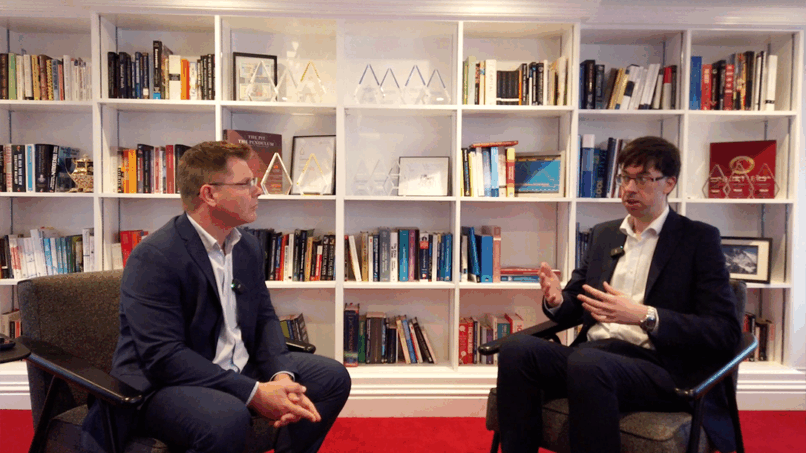There’s a good reason why Courtiers offers both a stocks and shares Individual Savings Account (ISA) and a Self-Invested Pension Plan (SIPP). They are two of the best ways that we can help clients achieve their financial goals and objectives.
For millions of people across the UK, they are the backbone of their finances. At the end of 2021 to 2022, the market value of UK adult ISA holdings stood at £741.6 billion. At the end of 2022, the market value of UK pensions was £1.931 trillion.
When considering ISAs and pensions, it’s helpful to think of them in terms of three distinct phases: accumulation (savings), decumulation (withdrawal), and finally, passing on wealth. In this article we’ll look at phase one, compare the two products’ relative strengths and weaknesses and suggest scenarios where one has a particular edge. We’ll follow this up later in the year with pieces that look at how pensions and ISAs match up when it comes to drawing income (the decumulation phase) and as a way of passing on wealth.
There’s a relief
One of the major benefits of a pension is that your pension provider can claim tax relief on your contributions boosting your pension pot. For a basic tax payer, for every £100 they contribute the pension provider can claim £25 back from the government. So, for every £100 they contribute from their own pocket, their pension savings grow by £125. As we often advise clients during meetings or telephone conversations, the government is even more generous to higher (40%) or additional rate (45%) taxpayers, who can claim back the additional tax relief on their tax return. For example, a Courtiers client who pays income tax at 40% and contributes £1,000 into their pension could claim an extra £200 in tax relief.
Workplace pensions
Let’s go back a few years. The auto-enrolment of workplace pensions, which began in October 2012 has had a profound effect on the UK pensions landscape, with employers required to enrol qualifying workers over the age of 22 into a workplace pension scheme and to contribute a certain proportion of their salary towards scheme members’ pensions. Like government tax relief on pension contributions, this is effectively free money and generally we would suggest this is a must. One small fly in the ointment is that tax relief on payments into pension schemes stops at age 75.
Some clients benefit from what’s called salary substitution, whereby their contribution comes from pre-tax earnings, which means they pay less National Insurance.
For ISAs there are no such tax breaks on ISA subscriptions. As we’ll see in a later article, the advantages of ISAs vis-à-vis pensions come during the decumulation phase when money is being withdrawn rather than in the savings or accumulation phase.
Know your limits
How much our clients can build up their savings doesn’t just depend on tax relief and employer contributions. For both pensions and ISAs, it also depends on contribution limits. For pensions, the maximum you can pay into a UK pension and receive tax relief on is £60,000 a year. If you have already flexibly accessed your pension, the limit is £10,000 a year.
The removal of the Pensions Lifetime Allowance (LTA) charge and the proposed abolition of the LTA allowance has figured in many of our discussions with clients. While these changes have the potential to boost the tax-free pension pots of some clients, there remains a high degree of uncertainty over whether a future Labour government might reverse the decision to scrap the LTA, which is planned for April 2024 and reintroduce the LTA charge. Another question we often get asked is around Lifetime Allowance Protection. This allows some individuals to continue to benefit from higher LTAs that were subsequently reduced. LTA Protection is a complicated subject. We would urge anyone with questions to contact their Courtiers Adviser.
Changes to the Tapered Annual Allowance, introduced in the 2023 Spring Budget, have further enhanced the advantages of pensions vis-à-vis ISAs during the accumulation phase, with adjustments allowing high earners to put more money into their pension and receive tax relief.
For ISAs, the tax-free limit is £20,000 a year, a figure that’s remained unchanged since April 2017, and has been frozen until 2028.
One point that should not be overlooked, which applies to many Courtiers clients, is that they can double this figure to £40,000 a year if both they and their partner each subscribe to an ISA.
Where to invest
Where a pension or ISA is actually invested can also make a big difference. Courtiers offers both a stocks and shares ISA and a SIPP, with a range of funds to suit investors’ varying risk profiles. Of course, past performance is not a reliable indicator of future returns.
Summing up
Tax relief on contributions give pensions the edge at the accumulation stage, particularly for higher and additional rate taxpayers. Members of workplace pension schemes also benefit from employer contributions.
That’s fine as far as it goes. However, as we’ll see in later articles, both pension and ISAs must be viewed in the round, taking into account a person’s time horizon and how each helps meet their financial goals and objectives. As we see with Courtiers clients, ISA investors derive particular benefits when they come to drawdown income from their accumulated savings.













